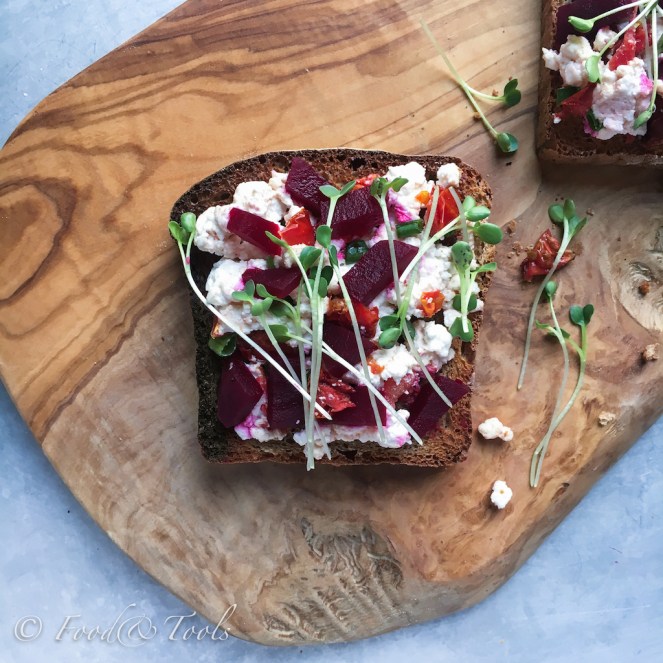 Baking homemade bread needn’t be difficult and it’s something I love to do. Recently I found einkorn flour stocked in some of our supermarkets and although I hadn’t baked with this type of wholemeal flour before, owned a cookbook with a specific bread recipe using this ingredient. Einkorn is an ancient wheat grain that has less gluten and more nutritional value than modern wheat varieties. The recipe was pretty straight forward but as fresh yeast wasn’t available, used fast action yeast instead. Also, used laban instead of buttermilk but have on other occasions made the same loaf using home fermented kefir. I have adapted this recipe from Trine Hahnemann Scandinavian Cookbook and as I prefer making smaller loaves, more or less halved the original recipe and adjusted the ingredients.
Baking homemade bread needn’t be difficult and it’s something I love to do. Recently I found einkorn flour stocked in some of our supermarkets and although I hadn’t baked with this type of wholemeal flour before, owned a cookbook with a specific bread recipe using this ingredient. Einkorn is an ancient wheat grain that has less gluten and more nutritional value than modern wheat varieties. The recipe was pretty straight forward but as fresh yeast wasn’t available, used fast action yeast instead. Also, used laban instead of buttermilk but have on other occasions made the same loaf using home fermented kefir. I have adapted this recipe from Trine Hahnemann Scandinavian Cookbook and as I prefer making smaller loaves, more or less halved the original recipe and adjusted the ingredients.
Kitchen equipment that made kneading this dough easier was the dough hook on my stand mixer. You can mix by hand using a sturdy wooden spoon, but it requires more effort. It’s a very sticky dough so all the mixing/kneading and the first rise is in the same bowl. Depending how warm your kitchen is, proofing times vary. The second rise is in the baking tin so you wont need to worry about shaping the loaf. Once the dough reaches the top of the tin (proofing for about 1 hour and 45 minutes) (also see note at end of recipe), it’s ready for baking in a preheated oven. Before baking loaves of bread (also sourdough and Irish soda bread), I like to dust the surface of the dough with plain flour for a more rustic looking loaf, this step is optional.
A delicious loaf that slices beautiful, keeps well and makes great tasting toast. Enjoy with sweet preserves or toast and spread with a soft curd cheese sweet pickled beetroot, oven dried tomatoes and sprouted greens for a tasty open sandwich.
Bread… one of life’s simple pleasures.
Einkorn Bread
Recipe adapted from the cookbook, Scandinavian Comfort Food by Trine Hahnemann.
Ingredients:
350g einkorn flour
150g bread flour
4g fast-acting yeast
8g fine sea salt
250ml laban, kefir or buttermilk
250ml water
1 tablespoon olive oil
1 tablespoon honey
You will need a 2 liter (8 cup) loaf tin, grease well with butter. If you wish, line the base with a strip of non-stick parchment extending over the edges for easier removal.
How to make:
Add both flours, yeast and salt to a large bowl (or bowl of a stand mixer), mix dry ingredients together. Pour in the laban, honey and olive oil. Mix the wet and dry ingredients together until combined and keep mixing (start using the electric dough hook now, if you have one) until the dough starts turning stringy and leaving the sides of the bowl or, balls around the dough hook. This took around 3 minutes using a dough hook, but will take longer by hand.
Leave the dough to rise in the same bowl (cover with a cloth) at room temperature for 30 minutes. Then, knock down the dough and stir again with a wooden spoon or dough hook for a about a minute. Scrape the dough into a buttered loaf tin, smooth over and leave to rise at room temperature until the dough has risen almost level with the top of the tin. About an hour and a half to two hours, depending on the warmth of your kitchen. While the bread is proofing, cover the tin loosely with some lightly oiled cling film or turn a large plastic container upside down to cover the entire baking tin which I think is easier.
Meanwhile, pre-heat the oven to 220C/424F/200C Fan oven/Gas mark 7.
Lightly dust the surface of the bread dough with plain flour (optional) and bake for about 35 to 40 or, until deep golden and the bottom of the bread sounds hollow when tapped. Remove baked bread from the tin and leave to cool on a wire rack before slicing.
Note: Although the author of the recipe mentioned using a 2 liter loaf tin, I used the same sized tin for the smaller loaf, letting it rise to almost level with the top of the tin and it turned out perfect each time. As of yet, I haven’t tried making a larger loaf with the same 2 liter tin.
SaveSave


